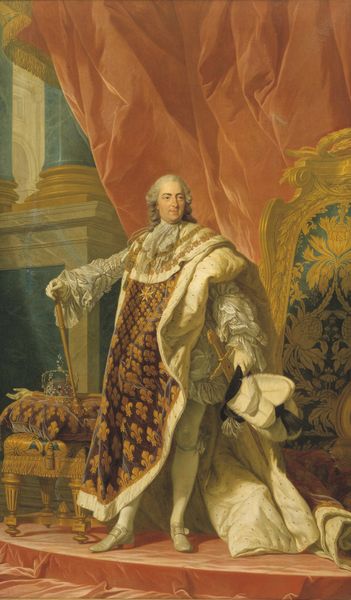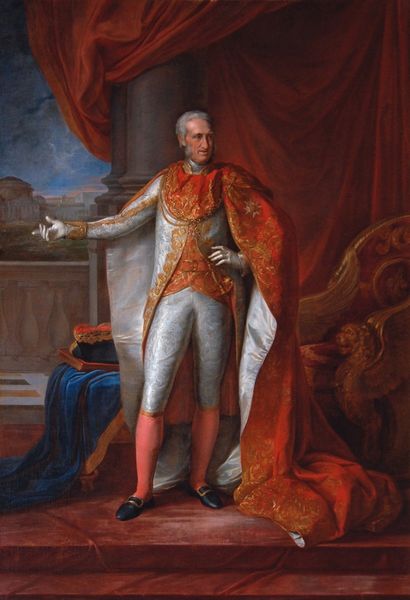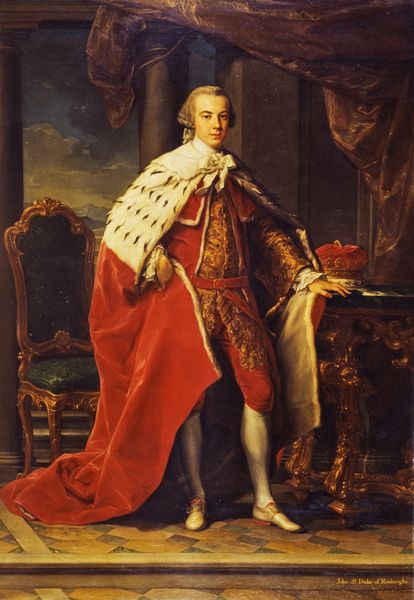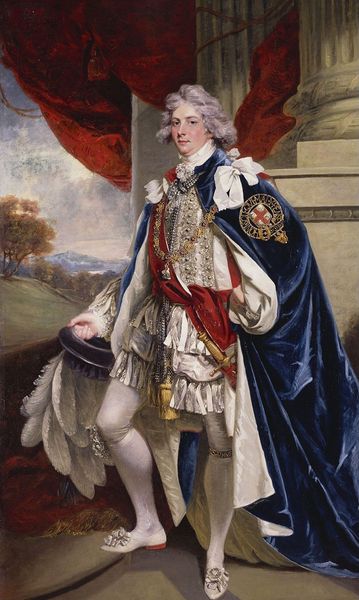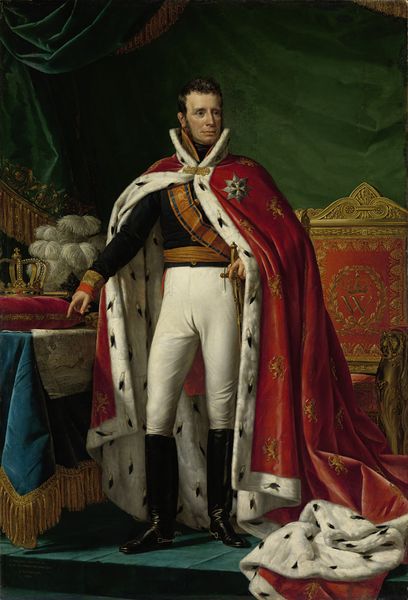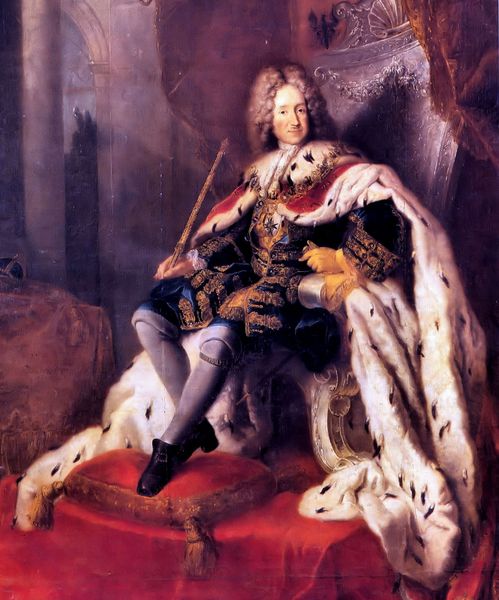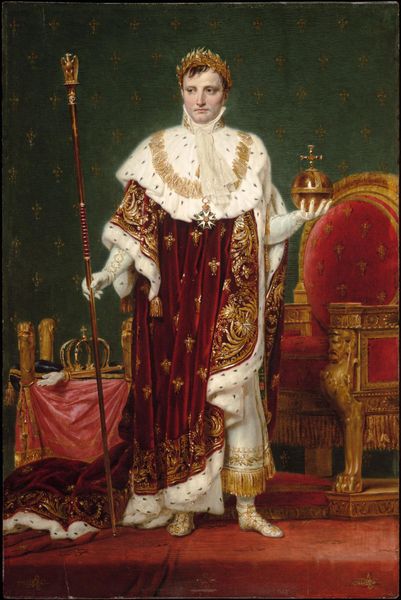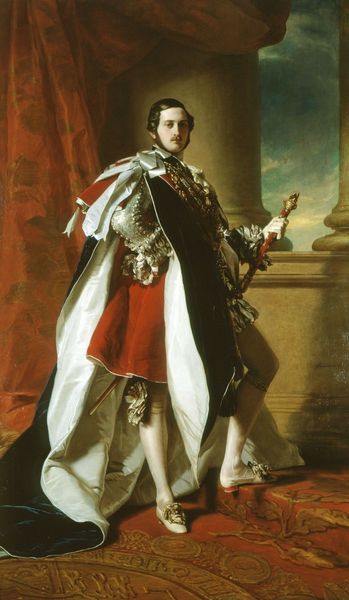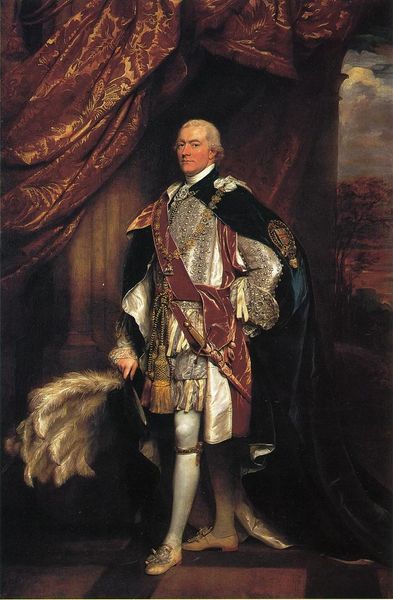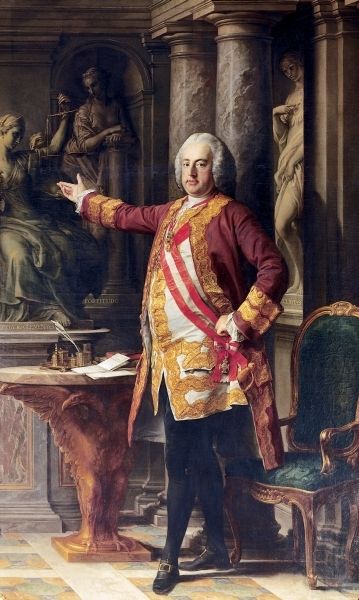
Portrait of Louis XVI, King of France and Navarre, Wearing Coronation Robes 1777
0:00
0:00
painting, oil-paint
#
portrait
#
neoclacissism
#
painting
#
oil-paint
#
oil painting
#
classicism
#
history-painting
#
academic-art
#
portrait art
Copyright: Public domain
Editor: So, here we have Joseph Duplessis's 1777 "Portrait of Louis XVI, King of France and Navarre, Wearing Coronation Robes." All that gold is dazzling but also makes him look so stiff and remote. How do you interpret this work? Curator: This portrait, while seemingly a straightforward depiction of power, speaks volumes about the crisis of representation inherent in the French monarchy. Consider the historical context: Duplessis painted this just over a decade before the Revolution. The excess, the opulent fabrics, aren't simply aesthetic choices. They're strategic attempts to solidify an image of divinely ordained rule, but can also be read as performative and ultimately unstable. Editor: Unstable? Because the sheer extravagance hints at underlying vulnerabilities? Curator: Exactly. Think about who this image was meant to impress and the messages it sends about French society. Does it project power, or does it inadvertently highlight the inequalities that fueled revolutionary sentiment? The symbolism, while traditional – the fleur-de-lis, the ermine – feels almost desperate in its assertion of authority. Does it evoke awe or something else? Editor: Now that you point that out, it feels performative in an almost tragic way, knowing what’s coming for him. A last-ditch effort to appear strong? Curator: Precisely! And the coldness you initially sensed, isn't that perhaps the very detachment required to maintain such a system? He is distanced from those who he rules over. Think about how race and class were enforced. This portrait isn't just art, it’s a complex artifact reflecting power, identity, and impending social upheaval. Editor: I didn't see the pre-revolution tensions just looking at the pretty surfaces, but understanding that context changes everything. Curator: It is imperative we look deeper! Reflecting on these contexts transforms how we approach similar artwork going forward.
Comments
No comments
Be the first to comment and join the conversation on the ultimate creative platform.
